A dig in volleyball is a crucial defensive move that helps keep the ball in play. It refers to the skill of receiving an attacked ball, typically a spike, and redirecting it to a teammate. This move is essential for teams wanting to defend against powerful attacks and maintain their chance to score.
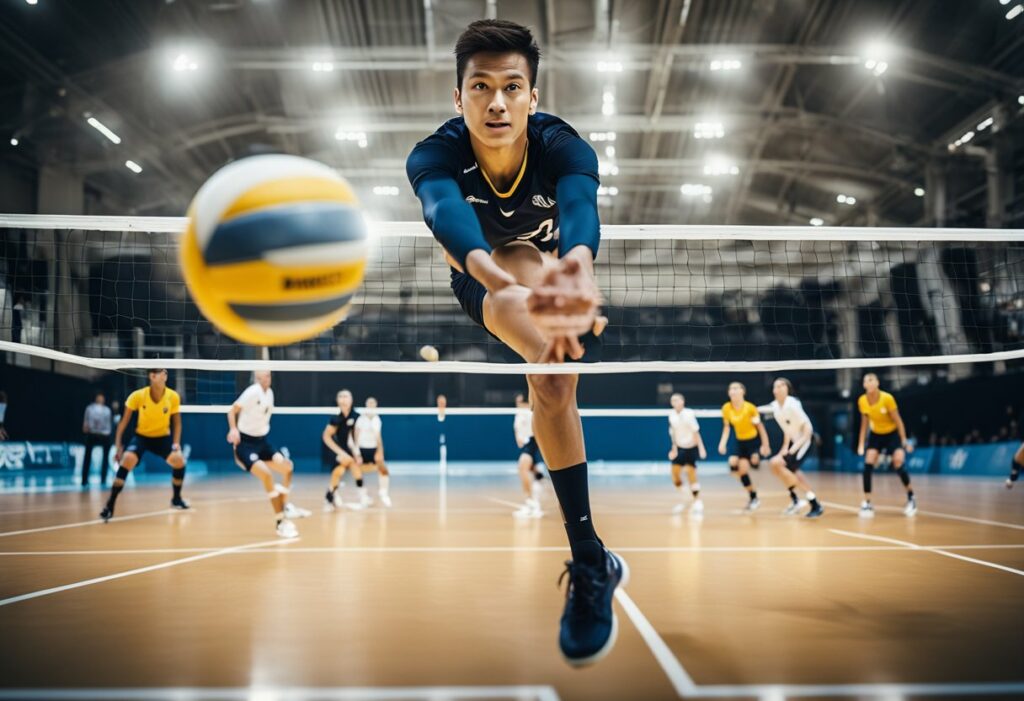
Digs can involve different techniques, each useful in various game situations. Players often practice drills to improve their digging skills, as mastering this move can make a significant difference in a match.
Understanding common mistakes and how to correct them is also important for players looking to enhance their performance on the court.
Key Takeaways
- A dig is a key defensive skill that keeps the ball in play.
- Different techniques and drills can improve digging ability.
- Recognizing and fixing mistakes can enhance overall volleyball skills.
Definition of a Dig in Volleyball
A dig in volleyball is an essential defensive move. It helps prevent the ball from hitting the ground after an attack. This skill keeps the game exciting and fast-paced!
When a player uses a dig, they usually rely on their forearms. This technique allows them to pass the ball to a teammate, setting up for a follow-up attack.
There are various methods to execute a dig. These include:
- Diving: A player leaps to reach the ball.
- Lunging: They stretch their body to get low.
- Using any body part: Players can utilize their feet, knees, or chest!
The goal is to keep the ball in play. A successful dig can lead to a great play and boost team morale.
Coaches often emphasize the importance of digging. It requires quick reflexes and decision-making. Good diggers can change the tide of a match.
A dig can be tricky to define. It differs from a pass in that it specifically deals with attacking plays. This distinction helps players understand their roles better!
Digs showcase a player’s determination. Every successful dig keeps the team fighting for victory! For more details about digging, check out this complete guide.
Types of Volleyball Digs
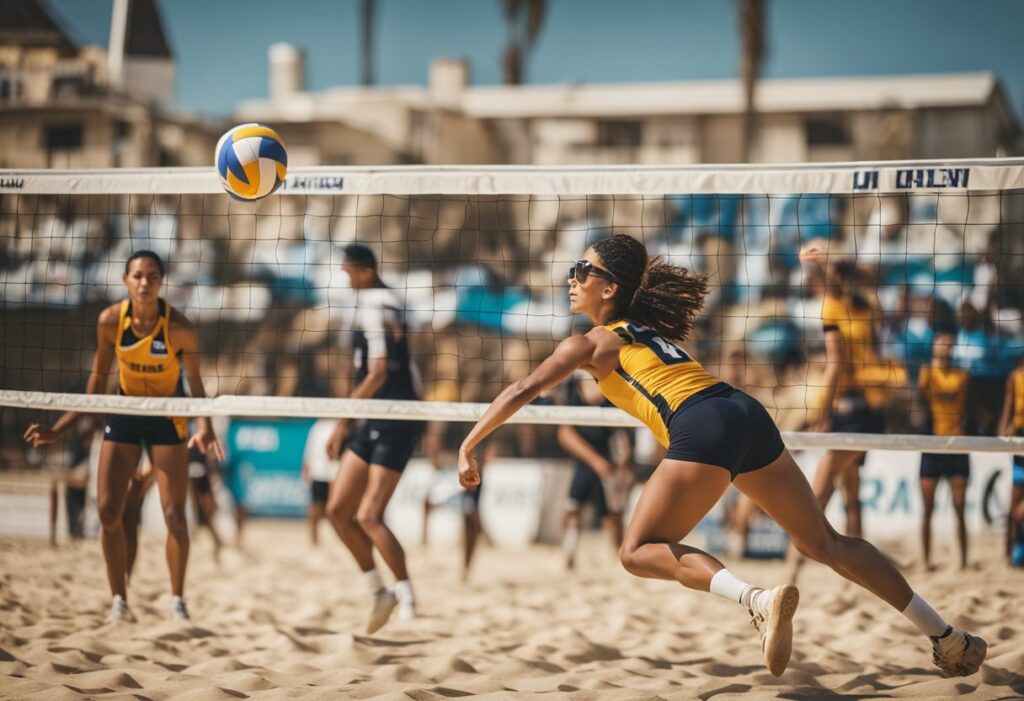
Digs are crucial in defending against powerful attacks in volleyball. Each type of dig has its own technique and is suited for different game situations. Below are the main types of digs that players use to keep the ball in play.
Standard Dig
The Standard Dig is a fundamental technique. Players often use their forearms to create a flat surface for contacting the ball. This method allows for accurate passes to teammates.
To execute a standard dig, the player stays low and bends their knees. They position themselves under the ball, extending their arms. Timing is important here, as proper footwork allows for a quick reaction.
This dig is useful against various kinds of attacks, especially when the ball comes directly toward the player. Mastering the standard dig can improve overall defensive skills.
Dive and Roll
The Dive and Roll technique adds more excitement to defense. When a player sees a ball coming at high speed, they may choose to dive.
During the dig, the player extends their body forward, usually landing on their forearms. After the initial contact, they quickly roll to their side. This movement helps to protect the player from injury and allows for a smooth transition back to their feet.
This technique is effective when the ball is difficult to reach or when space is limited. It can also create better angles for setting the ball after the dig.
Pancake
The Pancake is a flashy defensive move. Players use this technique when the ball is just about to hit the floor. Instead of diving, they spread their hand flat on the ground.
To perform a pancake, the player quickly drops to a knee. They extend one hand while keeping their palm down. This creates a surface that can bounce the ball back up in the air.
This move is particularly thrilling during crucial moments. It showcases quick reflexes and strong determination to keep the ball in play. Mastering the pancake can make a player a standout defender.
Basics of Volleyball Digging
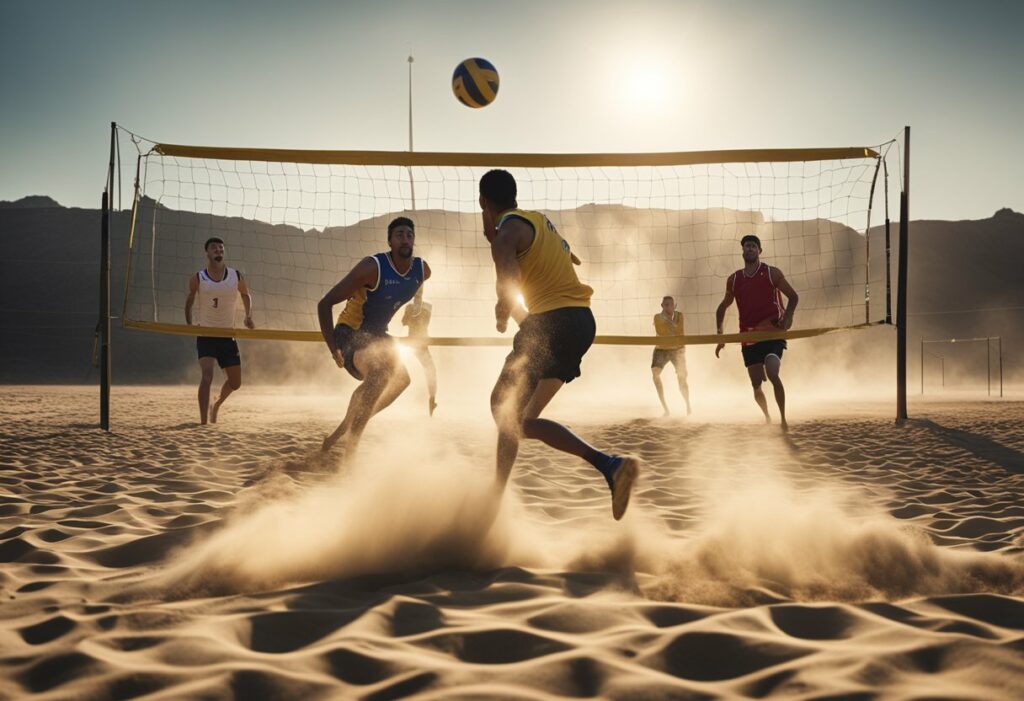
Digging is a crucial skill in volleyball that requires players to be quick and agile. Mastering the fundamentals of timing, anticipation, body position, and posture can lead to outstanding defensive plays.
Timing and Anticipation
Timing is everything when it comes to digging. Players must watch the ball closely and anticipate its trajectory. This means predicting when the opposing team will spike or tip the ball.
By analyzing the server’s approach and the hitter’s body language, players can position themselves better. A well-timed dig can lead to a smooth transition for a teammate’s attack.
Key Tips:
- Focus on the ball, not the player hitting it.
- Start moving before the ball crosses the net.
- Keep an eye on the setter to gauge the next play.
Being one step ahead makes all the difference!
Body Position and Posture
The right body position and posture help ensure a successful dig. Players should maintain a low center of gravity, which allows for quicker movements.
When preparing to dig, they should bend their knees and keep their feet shoulder-width apart. This stance provides balance and helps them react swiftly.
Tips for Proper Posture:
- Keep arms relaxed but ready, with elbows slightly bent.
- Maintain a forward lean to spring into action.
- Position the body towards the ball to increase reach.
This setup allows players to perform digs more efficiently while putting them in the best position to make the next play!
The Technique of Digging in Volleyball
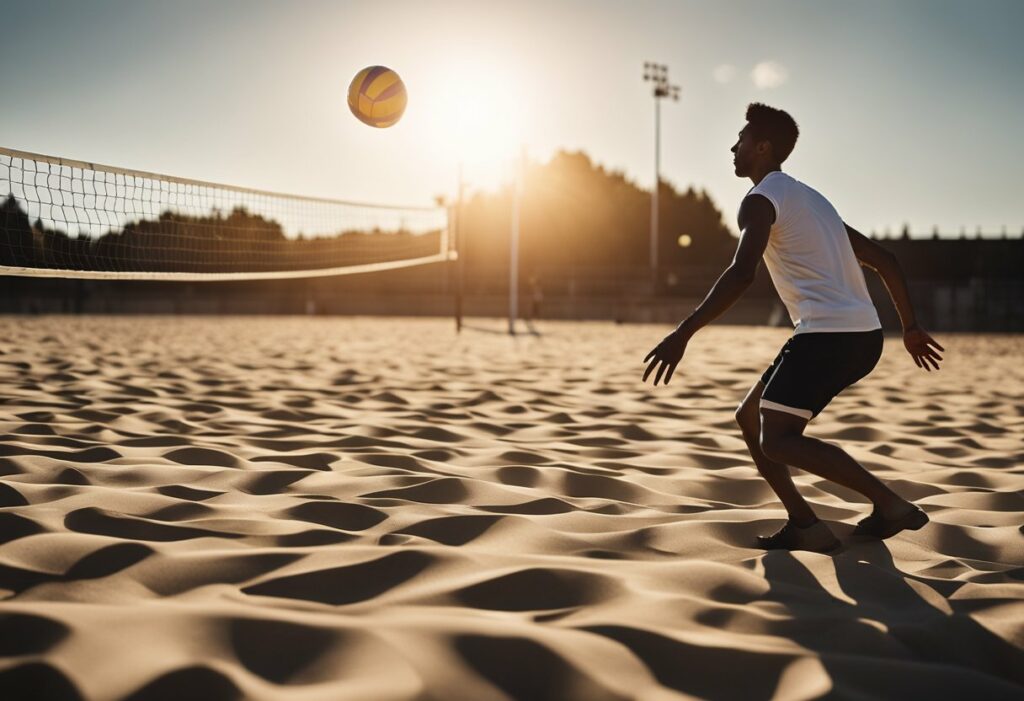
Digging in volleyball requires precise movements and proper body positioning. Mastering the technique is essential for effective defense. A successful dig involves two key components: platform formation and arm movement.
Platform Formation
Creating a solid platform is crucial for a successful dig. The player should position their arms together, forming a flat surface with the forearms. This helps to direct the ball accurately. The hands should be held together, fingers pointing straight down and thumbs wrapping around the bottom.
The feet should be shoulder-width apart to maintain balance. The player’s knees should be slightly bent, ready to spring into action. Keeping the weight on the toes helps with quick movements. The arms should extend in front of the body, preparing to meet the incoming ball. This platform allows for better control and accuracy when making the dig.
Arm Movement and Angle
When preparing for a dig, arm movement is important. The player needs to track the ball and adjust their position. As the ball approaches, they should keep the arms steady and in the right angle.
She should angle her forearms towards the target area, ensuring the ball goes to a teammate. It is essential to lock the elbows, creating a strong and stable position. The key is to absorb some of the ball’s impact while maintaining focus. Following through with the arms after contact ensures better control and directs the ball to the intended player.
Volleyball Digging Drills
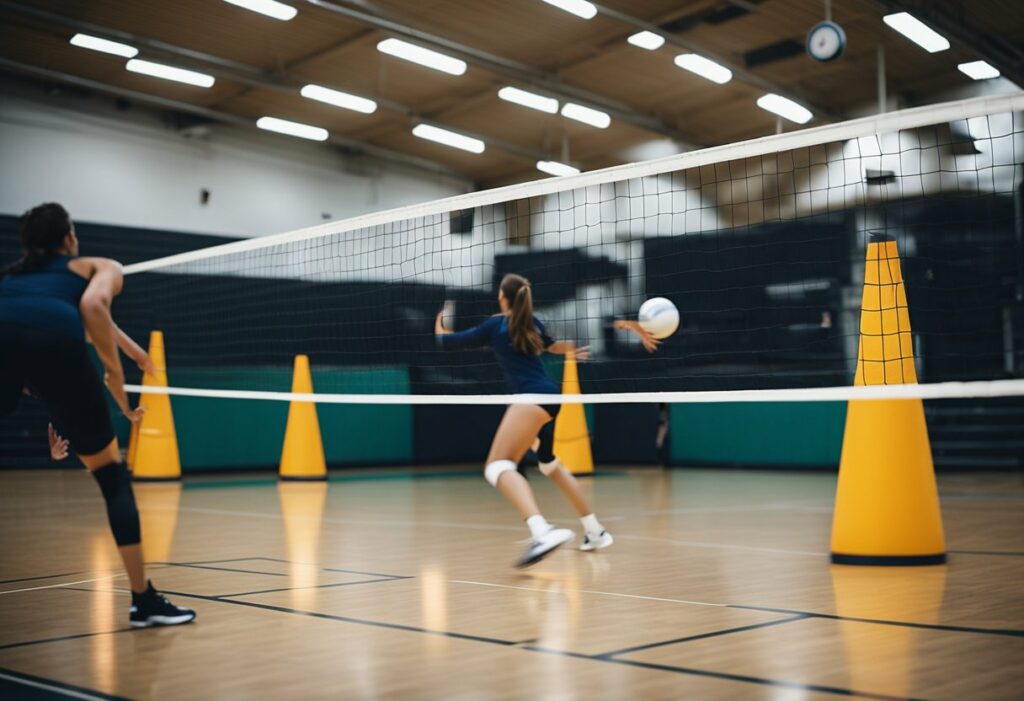
Practicing digging skills is crucial for volleyball players looking to enhance their performance. Specific drills can help players develop quick reactions, control, and accuracy.
Individual Drills
- Wall Drill: Players stand about 5-10 feet from a wall and hit the ball against it using proper digging techniques. They focus on maintaining control while digging the ball back to themselves.
- Self-Toss Drill: In this drill, a player tosses the ball into the air and digs it back to the ground. This helps improve timing and body positioning.
- Target Practice: Set up a target on the floor. Players practice digging the ball to land directly on or near the target. This drill enhances accuracy and control.
- Reaction Drill: Players have a partner toss the ball to different angles. They must react quickly and dig the ball back, focusing on movement and flexibility.
Volleyball Digging: Mistakes and Corrections
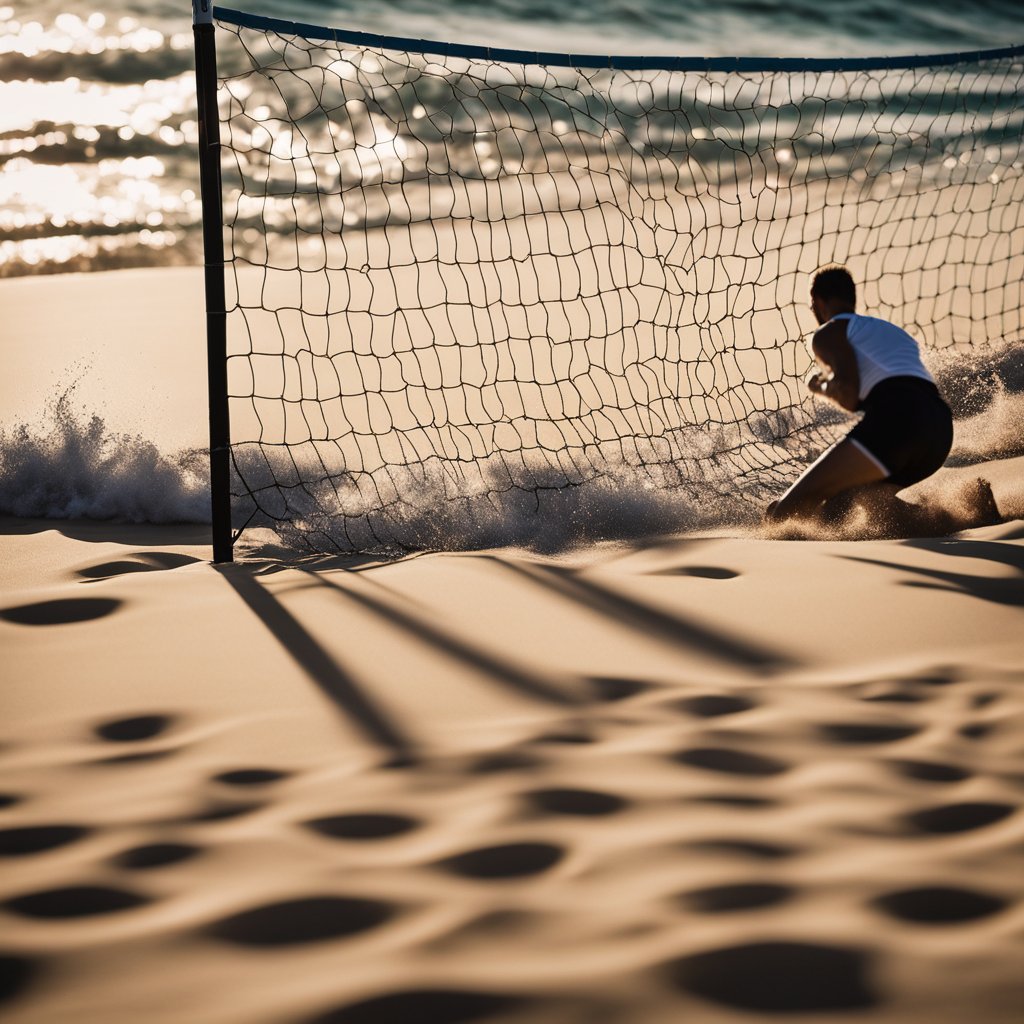
Making a great dig in volleyball requires skill and practice. Players often face specific challenges that can hinder their performance. Addressing these common mistakes—like improper hand positioning, late reaction time, and lack of footwork—can greatly improve their defensive play.
Improper Hand Positioning
One major error in volleyball digging is improper hand positioning. Players sometimes hold their hands too close together or too far apart. This can lead to missed balls or weak digs.
The correct position involves keeping the hands about shoulder-width apart. The thumbs should be pointed outward, creating a stable platform with the forearms. This allows for better control and power in the dig.
Practicing hand positioning with partner drills can help players adjust quickly during games. Regular feedback from coaches can also ensure proper technique is maintained.
Late Reaction Time
Another critical mistake players make is late reaction time. When the ball is served or attacked, hesitation can lead to missed digs. Quick reflexes are essential in making effective plays.
To improve reaction time, players should focus on anticipating the ball’s path. Watching the opposing players can provide clues about where the ball will go.
In training, reaction drills, such as catching or passing against a wall, can sharpen these skills. The faster the player reacts, the more likely they will successfully execute a dig.
Lack of Footwork
Footwork is vital for successful digs, yet many players neglect this aspect. Failing to move into position limits the ability to make an effective play.
Players should maintain a low stance with knees slightly bent. This position allows for faster lateral movement. Utilizing short, quick steps can help reach the ball efficiently.
Incorporating footwork drills into practice is key. Agility ladders and cone drills can enhance movement speed and precision. A well-timed move can be the difference between a great dig and a missed opportunity.
Role of the Libero in Digging
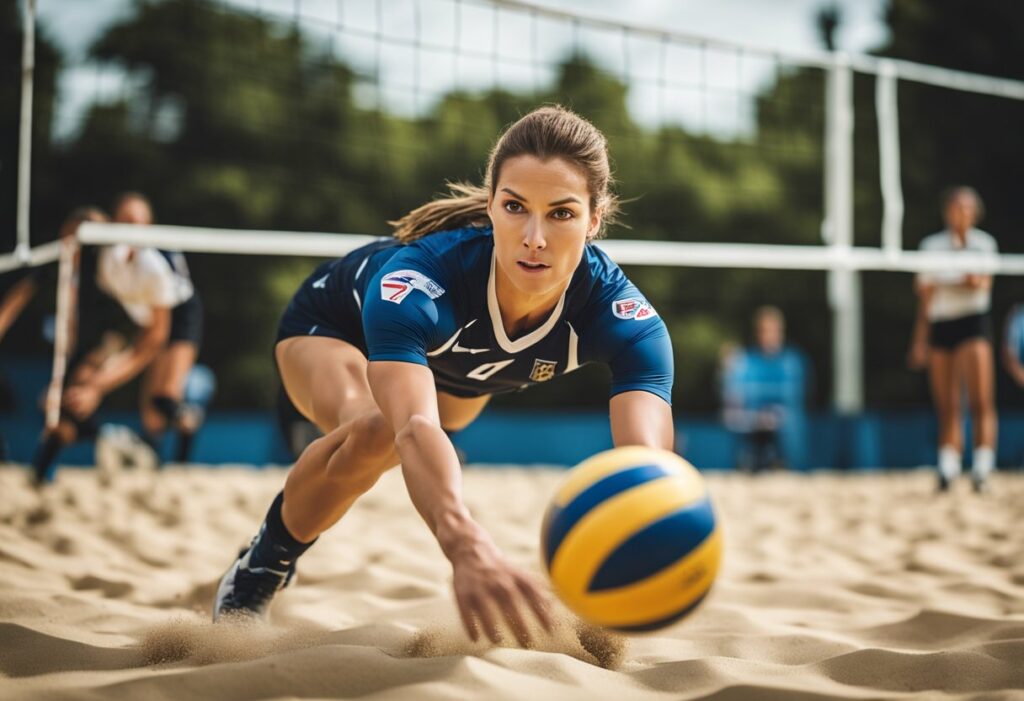
The libero plays a crucial role in digging during volleyball games! This specialized defensive player focuses on preventing the ball from hitting the ground. With quick reflexes and excellent positioning, they make impressive saves.
The libero always stays in the back row. They are unique because they can substitute in and out without restrictions. This allows teams to have a dedicated player for defense.
Key skills of the libero include:
- Quick Reaction: They must respond quickly to powerful hits.
- Strong Technique: Proper body positioning helps them dig effectively.
- Communication: They work closely with teammates to set up plays.
When digging, the libero often uses their forearms. This technique helps control the ball and pass it to a teammate. They aim to keep the play alive and set up attacks.
A great libero can turn the tide of a match with their digs. Their ability to read the game keeps the team competitive. Volleyball fans love to watch them because of their agility and skill!
Frequently Asked Questions
Digs are a crucial part of volleyball, and understanding them can elevate a player’s game. Here are some common questions that many players and fans have about executing digs effectively and the techniques involved.
How can you execute the perfect volleyball dig?
To execute the perfect dig, a player should position themselves with their feet shoulder-width apart and knees bent. They need to stay low and have quick reactions to track the ball closely. Using the forearms to pass the ball accurately to a teammate is essential when preventing it from hitting the ground.
What are the key techniques for digging in volleyball?
Several key techniques are vital for a successful dig. Players should focus on keeping their eyes on the ball, maintaining proper body positioning, and using their forearms correctly. A good dig often involves moving quickly to get into the right spot and being ready to absorb the impact of a strong hit.
Can you explain the different types of digs in volleyball?
There are various types of digs, including platform digs and hand digs. Platform digs use the forearms together to form a solid surface for the ball. Hand digs involve using the hands to get underneath the ball, making them useful for more controlled passes. Each type serves a specific purpose depending on the game’s situation.
What makes a dig different from a regular receive?
A dig focuses on defending against a powerful attack from the opposing team, while a regular receive usually happens with lighter or softer hits. Digs require quicker reflexes and often involve more intense movements like diving or lunging to keep the ball in play.
What’s the official way to count a dig during a volleyball match?
In volleyball, a dig is counted when a player successfully prevents the ball from touching the ground after an attack. It is recorded as a defensive stat and reflects a player’s ability to maintain play. Each successful dig contributes positively to a team’s defensive record.
In what ways does digging vary between men’s and women’s volleyball?
Digging techniques can vary slightly between men’s and women’s volleyball due to differences in the style and speed of the game. Men may rely more on strength and powerful digs, while women often use agility and positioning. Both approaches aim to keep the ball in play effectively.



